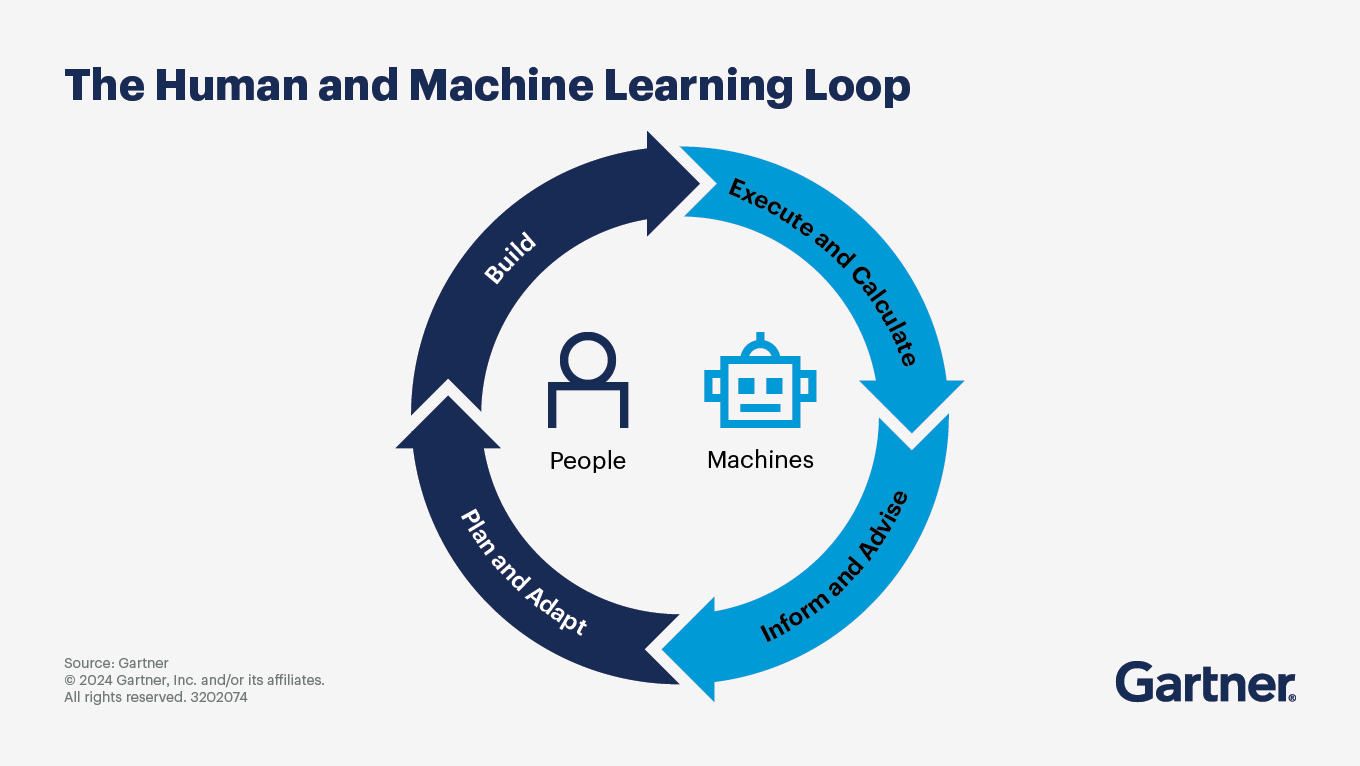Expand the range of tasks you can automate and the scale of work you can accomplish using polyfunctional robots.
- Gartner client? Log in for personalized search results.
Polyfunctional Robots Will Enhance Machine-Human Productivity
By Bill Ray | September 25, 2024
This page features a previous edition of Gartner’s Top Strategic Technology Trends. For the most up-to-date insights, explore the Gartner Top 10 Strategic Technology Trends for 2026.
Embrace the future of more usable, polyfunctional robots
In the world of automation, technology assets ideally perform not just one or a few prescribed tasks, but also learn new tasks without requiring reprogramming or development.
As a 2025 top technology trend, polyfunctional robots are starting to fulfill that vision. These versatile robots have a form factor and intelligent software that allows them to execute more than one task, and they are becoming flexible enough to “learn” to complete new tasks that were not part of their original design or programming.
The promise of polyfunctional robots
Industrial companies have almost four million single-function robots operating today. They already address labor shortages, reduce costs and increase efficiency. With the evolution of robots who can fulfill various functions, businesses can increase the value these machines deliver.
Polyfunctional robots deliver higher ROI
Multiuse robots can provide a quicker return on investment compared with single-function machines. They do so by enabling:
A more flexible workforce. Polyfunctional robots can fulfill a variety of different tasks which creates a flexible workforce adaptable to current needs.
Higher robot utility. When an enterprise can use the same robot to fulfill multiple tasks, the organization not only uses the robot more, but it can also leverage them for the most important and highest value activities.
Stronger human-machine collaboration. These robots are designed to operate in a human environment and use equipment designed and positioned for human access. This is different from single function robots which may operate in delineated spaces or cages to protect nearby humans. As polyfunctional robots navigate human spaces with steps or counter-level tasks, the technology will push manufacturers to explore novel form factors, shapes and sizes.
What to expect from era of polyfunctional robots
Though enterprises have been slow to embrace robots with a variety of functions, ongoing development and decreasing price points are increasing their appeal.
Over the next 24 months, simplified deployment — with no custom programming or bolt-down infrastructure — will accelerate business’ adoption of polyfunctional robots. Enterprises will likely deploy a handful of robots (or even a single robot), then scale up as they see benefit or in response to production demands.
In time, expect to build a fleet of polyfunctional robots, or make use of rentable ones from third parties to address periods of high demand. Fleet management systems that can integrate with one another and with process management systems that include humans in the workflow will be essential. Currently, only nascent standards support such integration, as vendors have been focused on developing and differentiating proprietary functionality.
Near-term actions to leverage the promise of polyfunctional robots
To expand opportunities for automation and mitigate disruption from deployment, Gartner recommends IT leaders to:
Identify tasks that could transition to a robot or be shared between a robot and human. Even if such a shift seems economically unsupportable, the combination of tasks may tip the balance.
Examine every robot acquisition to understand if a polyfunctional robot would provide greater value immediately or in the future.
Build local expertise in robotology with a view to drawing up essential company policies and ensuring polyfunctional robots can be repurposed in-house.
Polyfunctional robots FAQs
What are polyfunctional robots?
Polyfunctional robots are designed to complete tasks not envisioned by the manufacturer or initial developer. In their ideal application, they will be able to sense and switch between tasks and even learn new skills through instruction rather than changes in programming.
What is an example of a polyfunctional robot?
An example of a polyfunctional robot might be a platform capable of switching payloads (or carrying multiple payloads) depending on the assigned task. Another example is a quality control robot capable of both inspecting whether a part was properly installed and ensuring there is no debris in or around the workspace.
Attend a Conference
Experience Information Technology conferences
With exclusive insights from Gartner experts on the latest trends, sessions curated for your role and unmatched peer networking, Gartner conferences help you accelerate your priorities.
Gartner CIO Leadership Forum
Phoenix, AZ

Drive stronger performance on your mission-critical priorities.
